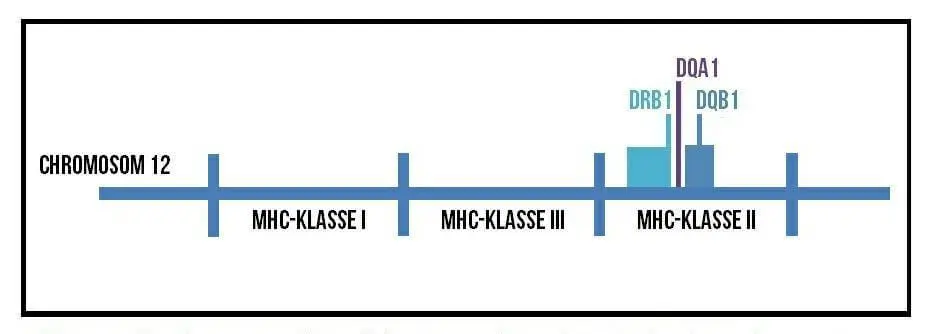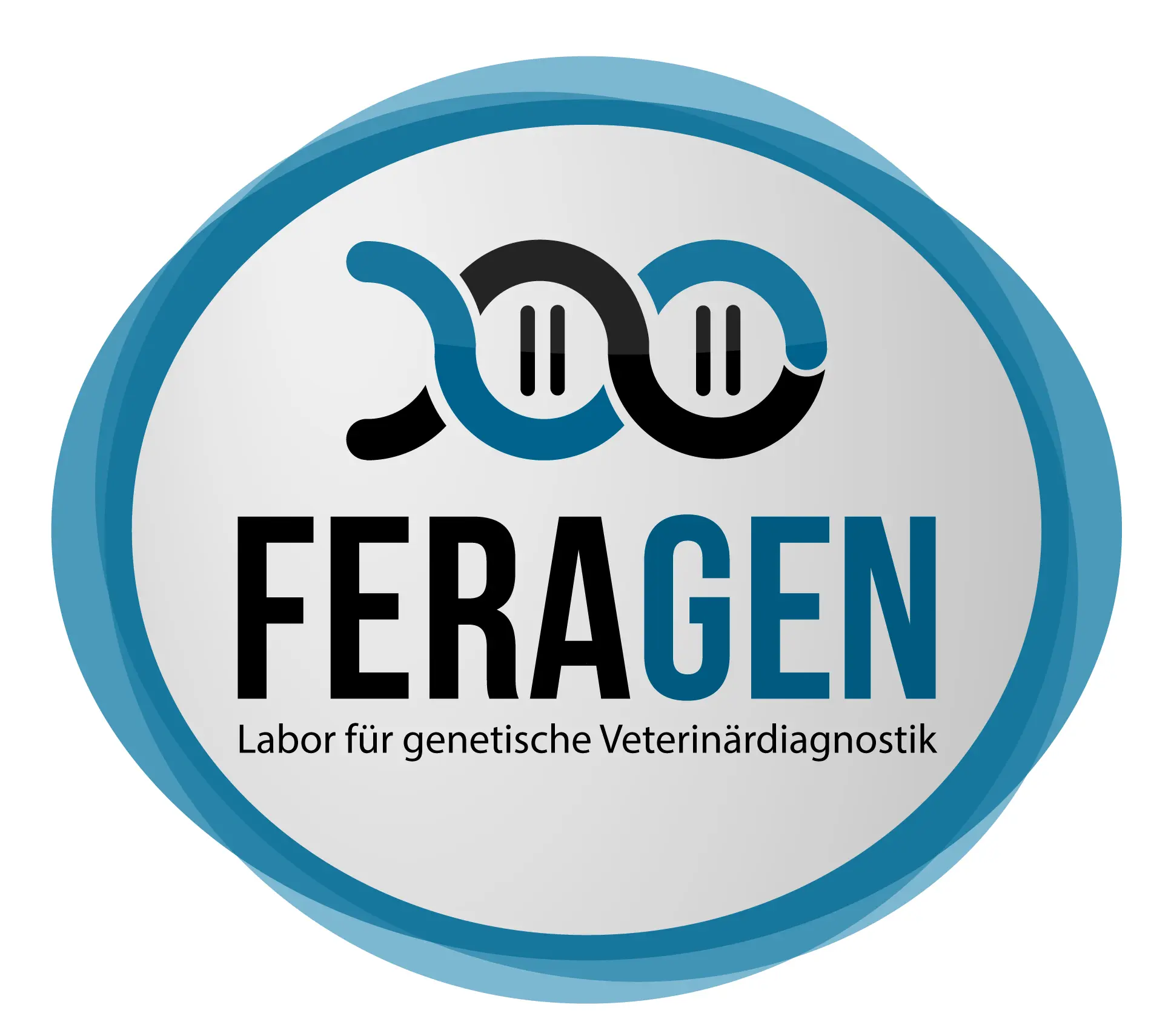This blog series was kindly made available to us by FERAGEN. Thank you very much!
www.feragen.at

DLA determination
As in humans, numerous genetic diseases can also be found in dogs, often with a much higher risk compared to humans. The reason for this can be found in the selective breeding of today’s dog breeds, which originated from a small number of original individuals. Dogs were often used for breeding despite being closely related or individual individuals were overrepresented in breeding in order to maintain defined phenotypic characteristics such as body size or shape, coat colour or behaviour. Inbreeding can also lead to dramatic impairments of the immune system, such as autoimmune diseases or cancer. It is therefore not surprising that such diseases are a serious problem in the pedigree dog population.
A defined area in the dog genome on chromosome 12 (Fig. 1), the so-called MHC complex (Major Histocompatibility), makes a significant contribution to the health of the animal. This is where numerous genes are located that are necessary for a functioning immune system. A specific area in this MHC complex is assigned to the so-called DLA genes, standing for dog-leukocyte-antigen (would that be grammatically something like HIV virus?). DLAs perform various important functions in the immune system, such as defence against viruses or bacteria.

The MHC genes are categorised into three different classes, depending on their function. The class II genes, which include DRB1, DQA1 and DQB1, are part of the early phase of immune defence. They recognise fragmented foreign substances and pass them on to other cells of the immune system, which render them harmless. Due to the immense diversity of foreign material, the presence of different alleles, i.e. different copies of the same gene, is all the more important.
Up to now, around 170 different versions of the DLA genes have been found in different breeds (Kennedy et al. 2007). They occur in various possible combinations, the so-called haplotypes. Unfortunately, many of today’s dog breeds only have a very limited variety of DLA genes. This genetic impoverishment of DLA genes leads to an increased susceptibility to autoimmune diseases. Variability is essential for these immune system genes, as this is the only way they are able to react to different viruses, bacteria or other foreign invaders in the body. The diversity of DLA genes can be tested using the dogs‘ DNA and thus represent an important step in the fight against autoimmune diseases.
In recent years in particular, a significant increase in autoimmune diseases has been observed in dogs. In these special forms of disease, the immune system is directed against the dog’s own body and mistakenly recognises the body’s own structures as foreign. The immune system endeavours to eliminate this ‘foreign body’, which can result in a wide variety of autoimmune diseases. Thousands of such diseases have been described to date. The following are individual examples of diseases associated with the DLA genes (Kennedy et al. 2007): Diabetes, rheumatism, polyarthritis, chronic hepatitis, hypothyroidism, hypoadrenocorticism (destruction of the adrenal glands), etc.
Breeding-relevant statement:
Each breed has its own specific DLA gene combinations. These reflect the history of the population of individual breeds, as well as breeding practices. By determining the DLA genes, it is possible to maintain diversity in the genes as far as possible if the genetic detection methods are used in breeding programmes (see Fig. 2).
The procedure could be as follows:
- The DLA genes of the breeding bitch are analysed using genetic detection methods, as are the genes of various potential stud dogs.
- The resulting gene combinations (haplotypes) of the animals are compared with each other and the male dog that differs as much as possible from the bitch’s haplotype is proposed for breeding.
- The offspring thus receive different gene combinations from the parents. However, if the breeding bitch and stud dog have the same haplotypes, the offspring can only inherit these, which leads to a genetic restriction of the line but also of the breed.

It is important to mention that the exclusion of other males does not say anything about the ‘breeding quality’ of the dog. In comparison with another bitch, these might be more suitable. The decisive factor is the combination of both animals.
By testing as many breeding animals as possible, breeding associations can also collect disease-relevant information. For example, if there is an increased incidence of disease in dogs, a comparison with the DLA results obtained may make it possible to establish a link with certain gene combinations. If such disease-causing or favouring combinations actually exist, breeding can be planned in future so that precisely these combinations are avoided in the offspring as far as possible. However, this presupposes that as much information as possible is available on different breeding animals.
For this reason FERAGEN has further developed the DLA haplotype analysis and can now offer you a comprehensive genetic determination and analysis thanks to the DNA test. You can order the DLA haplotype analysis directly in the online shop. The Onlineshop






